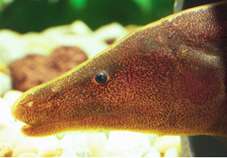Fish offer clues to spinal cord renewal

(PhysOrg.com) -- Spinal cord injuries are devastating, but fish may be the key to finding a cure.Research shows adult fish that sustain a spinal cord injury have the miraculous ability to not only regenerate the spinal cord, but to recover function as well — meaning they are able to perform tasks they were able to do prior to the injury.
For the past four years, biology department chair Günther Zupanc and his research associate, Ruxandra Sîrbulescu, have been studying this stunning recovery in fish.
Their research was recently published in the journal Brain Research Reviews.
Zupanc’s team is examining how fish are able to regenerate the spinal cord in hopes of ultimately finding a way to replicate this process in humans. "To cure spinal cord injury would be amazing and incredible for people who are suffering," Zupanc said.
Fish use a "clean" type of cell death, called apoptosis, to remove cells damaged by injury, said Zupanc. This is in contrast to mammalian species, in which massive necrotic cell death occurs after injury. This necrotic response leads to an inflammation of tissue, and thus, to a secondary massive wave of cell death.
According to the Christopher & Dana Reeve Foundation, nearly 1.3 million people live with spinal cord injuries in the United States. The average cost for victims of spinal cord injury ranges from $230,000 to $780,000 in the first year alone. "Spinal cord injury is devastating to the individual, families and society," said Zupanc. "The ultimate goal is to cure spinal cord injury."
The first observation of a fish’s ability to recover from spinal cord injury was performed as early as 1920 on goldfish. However, the behavioral observations were not complemented with any examination of structural changes.
The research of Zupanc and Sîrbulescu dives deep into the structural basis of this amazing capability of fish, and observes the step-by-step regeneration process of the spinal cord.
According to Zupanc, after removal of part of the spinal cord, the injured fish sees a full recovery in as little as six to eight weeks.
"My laboratory has pioneered the large-scale identification of proteins involved in the individual regenerative processes," Zupanc said. "Our research has led to a fair understanding of regeneration in organisms that are capable of healing wounds in the brain or spinal cord. This knowledge has led to a better understanding of the factors that limit regeneration in mammals, including humans.
"Humans have some regeneration potential. The trick will be to unravel the hidden potential of humans, and fish may show us how to do that."














